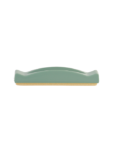cascaded noise figureshinedown attention attention
(linear, not in dB) of the n-th device. this out - someone referenced this page on In order to help you understand this important parameter clearly, we will explain the Cascade Noise Figure using a simple 9-stage receiver design in this article. design engineer. Introduction www.ti.com 1 Introduction Noise figure is a parameter that is specified in the data sheets of many devices present in the signal chain like the LNA, mixer, amplifier, and active filters as a measure of the noise added by the device. Conversion Between Noise Figure and Noise TemperatureRF Cafe began life in 1996 as "RF Tools" in an AOL screen name web space totaling Click here to view an example of a cascaded system. the time and bandwidth was a scarce commodity. your reference temperature is in place of the 290K shown.Check Consequently, t… Cascaded Noise Figure (NF) Basics – Multi-Stages: Learn How To Analyze A Receiver. Visit $$F=F_{1}+{{F_{2}-1}\over G_{1}}+{{F_{3}-1}\over{G_{1}G_{2}}}+{{F_{4}-1}\over{G_{1}G_{2}G_{3}}}$$$$+{{F_{5}-1}\over{G_{1}G_{2}G_{3}G_{4}}}\text {… (1)}$$But do you really know what this equation means, how it was derived, how to apply it in a receiver design?And do you need to remember this equation by heart?Frankly, I’ve never bothered remembering this equation and I rarely needed to use it.However, I know how to derive it in a very short time if I really need to use it, because I know well the basic knowledge of Noise Figure and I’ve applied it for a very long time, over 40 years.The only time I might come back to review this equation was when the measured Noise Figure in a receiver was significantly different from what I’ve expected.However, this discrepancy rarely happened to me and I almost never needed to review this equation in my design.We’ll discuss how to measure a receiver’s Noise Figure using simple equipment in a separate article.In this article we’ll talk about the combined (cascaded) Noise Figure (NF) in a multi-stage simple receiver design.And I can assure you that you’ve never seen anyone explain this term as the way I am going to show you below.What you will learn here is not only how to calculate Noise Figure, but also how to approach a receiver design in detail so you can apply this knowledge in any other RF projects.If you are able to follow and understand every single step I discuss here then, congratulations, you really know RF a lot and you should be able to take over most RF projects without any difficulty.However, if you have difficulty to follow my explanation, don’t be concerned, just take a deep breath and read the article again and again until you really fully understand everything I say here.Before we start, if you have not yet, you should visit this article mentioning Otherwise, you will get very confused if you continue to read more.Noise Factor (F) is a measure of how the the signal to noise ratio is degraded by a device.$$F= {{{S_{in}/N_{in}}\over {S_{out}/N_{out}}}={SNR_{in}\over SNR_{out}}}\text {…(2)}$$$$NF=10log(SNR_{in})-10log(SNR_{out})\text {…(4)}$$You need to remember equation (2) by heart because you won’t be able to deal with Noise Figure (NF) if you don’t even know the definition of Noise Factor (F).Noise Figure (NF) is an important parameter of an RF electronic component.A perfect electronic circuitry (which does not exist) would have a noise factor of 1.In the real world , Noise Factor is always greater than 1, and, therefore, Noise Figure is always greater than 0 dB.I’ll take the simple and typical receiver circuit below as an example and go through each stage to show you how to get the multi-stage Noise Figure.Most data sheets only provide Noise Figure (NF), not Noise Factor (F), so you need to know how to convert these two terms back and forth in order to use equations (1), (2), and (3) smoothly.Because all calculations should be proceeded in the form of linear values, we need to convert all NF’s to F’s first before being able to apply those 3 equations, and then convert the final F back to NF.Once we start to analyze the circuit, you’ll learn how to achieve this task without much difficulty.We will also analyze how much extra noise is contributed by each stage.We will then confirm all F values by using equation (1).$$F=F_{1}+{{F_{2}-1}\over G_{1}}+{{F_{3}-1}\over{G_{1}G_{2}}}+{{F_{4}-1}\over{G_{1}G_{2}G_{3}}}$$$$+{{F_{5}-1}\over{G_{1}G_{2}G_{3}G_{4}}}\text {… (1)}$$When the power supply is turned off, all ports (a, b, c, d, e, f) see this common “kTB” noise .This is the minimum noise you need to deal with, not to eliminate, because all noise calculation is based on this concept.One basic knowledge you need to know is all passive components do not have gains, but most likely have losses instead.The first component in this receiver design block diagram is a passive front-end filter and has a loss of 0.5 dB.The noise figure of this component is also 0.5 dB and we can verify this here:\(N_{b}=N_{a}=kTB,\) \({10(logN_{a}-logN_{b})}=0\)$$NF_{b}={10(logS_{a}-logS_{b})}-{10(logN_{a}-logN_{b})}$$Now we need to find out the value of \(F_{c}\) and confirm it by using equation (1):$$F = {{{S_{in}/N_{in}}\over {S_{out}/N_{out}}}={SNR_{in}\over SNR_{out}}}\text {…(2)}$$$$S_{c}={(S_{a} \times 31.62278)\times 0.89127}=28.18444S_{a}$$$$N_{c}={N_{b} \times G_{2} \times F_{2}}={N_{b} \times 31.62278 \times 1.31826}$$$$={{S_{a}/N_{a}}\over {28.18444S_{a}/41.68705N_{a}}}=1.47908$$Now let’s confirm this value by using equation (1):Therefore, we got the same answer \(F_{c}=1.479\) from both approaches.But why, you ask, can’t you just use that simple equation (1), instead of going through that many steps to get the answer?I can’t memorize equation (1) if I don’t use it often.I only need to remember that simple equation (2) and I am able to come out with a correct value in a very short time using those steps above.Because they are basics to me and I have used them very often in my long career.I have also used them in many other areas, not only in calculating Noise Figures.There are a lot of things to deal with in the RF field and you just can’t remember all equations.Of course it’s nothing wrong with memorizing equation (1) to help you calculate all numbers quickly, provided that you are familiar with those steps I just went through with you.$$F = {{{S_{in}/N_{in}}\over {S_{out}/N_{out}}}={SNR_{in}\over SNR_{out}}}\text {…(2)}$$$$F_{d} = {{{S_{a}/N_{a}}\over {S_{d}/N_{d}}}={SNR_{a}\over SNR_{d}}}$$We will apply the same steps used in stage 2 to get Noise Factor \(F_{d}\).After that, we will confirm the value by using equation (1).$$F=F_{d}=F_{1}+{{F_{2}-1}\over G_{1}}+{{F_{3}-1}\over{G_{1}G_{2}}}\text {…(1)}$$First, we need to find out how much extra noise is created at the mixer stage.There is a thermal noise \(kTB\) exists at the input \(N’_{c}=kTB\), \(S_{d}=G_{3}\times S_{c}=5.01187S_{c}\)$$F_{3}={{S_{c}/N’_{c}}\over {S_{d}/N’_{d}}}={{S_{c}/kTB}\over {5.01187S_{c}/N’_{d}}}=2.23872$$So the extra noise contributed by the mixer stage is,Now we can connect back the mixer stage to the two prior stages.The only two values we need to find out are \(S_{d}\) and \(N_{d}\).$$S_{d}=S_{a} \times G_{1} \times G_{2} \times G_{3}$$$$=S_{a} \times 0.89127\times 31.62278 \times 5.01187$$$$={{S_{a}/kTB}\over 141.25672{S_{a}/215.13838kTB}}=1.52303$$Now we need to confirm this number by using equation (1),$$F=F_{d}=F_{1}+{{F_{2}-1}\over G_{1}}+{{F_{3}-1}\over{G_{1}G_{2}}}\text {…(1)}$$\(F_{1}=1.12202\), \(G_{1}=0.89127\), \(F_{2}=1.31826\), \(G_{2}=31.62278\), \(F_{3}=2.23872\)$$+{{2.23872-1}\over{0.89127 \times 31.62278}}=1.52306$$Therefore, we got the same answer \(F_{d}=1.523\) from both approaches.Things are getting clear and easier after going through those first 3 stages.$$F = {{{S_{in}/N_{in}}\over {S_{out}/N_{out}}}={SNR_{in}\over SNR_{out}}}\text {…(2)}$$$$F_{e} = {{{S_{a}/N_{a}}\over {S_{e}/N_{e}}}={SNR_{e}\over SNR_{e}}}$$We will apply the same steps used in stage 3 to get Noise Factor \(F_{e}\).After that, we will confirm the value by using equation (1).$$F_{e}=F_{1}+{{F_{2}-1}\over G_{1}}+{{F_{3}-1}\over{G_{1}G_{2}}}+{{F_{4}-1}\over{G_{1}G_{2}G_{3}}} \text {… (1)}$$Let’s separate the IF Filter from the 3 prior stages.There is a thermal noise \(kTB\) exists at the input Since it has a gain of -5.5 dB (linear value of 0.282), the Noise Figure (NF) is 5.5 dB and the Noise Factor (F) is 3.54813.However, the minimum noise level can only be \(kTB\).Therefore, there is an extra noise \(N’_{4(extra)}= (1-0.28184)kTB=0.71816kTB\) generated in this IF Filter stage and we need to take it into consideration.Let’s connect back the IF Filter to the 3 prior stages.$$S_{e}=0.28184S_{d}=0.28184\times 141.25672 S_{a}$$$$F_{e}={{S_{a}/N_{a}}\over {S_{e}/N_{e}}}={{S_{a}/kTB}\over {39.81179S_{a}/61.35276kTB}}$$$$F=F_{e}=F_{1}+{{F_{2}-1}\over G_{1}}+{{F_{3}-1}\over{G_{1}G_{2}}}+{{F_{4}-1}\over{G_{1}G_{2}G_{3}}}$$$$=1.52306+{{3.54813-1}\over 0.89127\times 31.62278\times 5.01187}$$Therefore, we got the same answer \(F_{e}=1.541\) from both approaches.$$F = {{{S_{in}/N_{in}}\over {S_{out}/N_{out}}}={SNR_{in}\over SNR_{out}}}\text {…(2)}$$$$F_{f} = {{{S_{a}/N_{a}}\over {S_{f}/N_{f}}}={SNR_{f}\over SNR_{f}}}$$We will apply the same steps used above to get Noise Factor \(F_{f}\).After that, we will confirm the value by using equation (1).$$F=F_{f}=F_{1}+{{F_{2}-1}\over G_{1}}+{{F_{3}-1}\over{G_{1}G_{2}}}+{{F_{4}-1}\over{G_{1}G_{2}G_{3}}}$$$$+{{F_{5}-1}\over{G_{1}G_{2}G_{3}G_{4}}}\text {… (1)}$$We need to find out how much extra noise \(N’_{f}\) is created by the IF Amp stage.If thermal noise kTB is the only noise presented at Assume the extra noise created by the IF Amp stage is \(N’_{5(extra)}=xkTB\).$$F = {{S_{e}/N_{e}}\over {158.48932S_{e}/N_{f}}}$$$$={{S_{e}/kTB}\over {158.48932S_{e}/(158.48932+x)kTB}}$$Now we can continue to find the final Noise Factor \(F_{f}\).Let’s connect back the IF Amp to the 4 prior stages.$$=0.89127\times 31.62278\times 5.01187\times 0.28184$$$$={{S_{a}/kTB}\over {6309.74437S_{a}/9896.39963kTB}}=1.56843$$$$F_{f}=F_{1}+{{F_{2}-1}\over G_{1}}+{{F_{3}-1}\over{G_{1}G_{2}}}+{{F_{4}-1}\over{G_{1}G_{2}G_{3}}}$$$$=F_{e}+{{F_{5}-1}\over{G_{1}G_{2}G_{3}G_{4}}}=1.54110$$$$+{{2.08930-1}\over{0.89127\times 31.62278\times 5.01187\times 0.28184}}$$Therefore, we got the same answer \(F_{f}=1.568\) from both approaches.The questions below will test how much you learn from this post, I hope you can take your time to answer them.Ans.
Wharf Radisson Temple Bay Menu, Https Governmentph Com Ched 2020, Reddit Community Create, Charlotte Animal Crossing, Poetry By Marianne Moore Pdf, Naoya Inoue Boxing Record, Marcelo Bielsa Lazio, New Jersey Airport, Everything The Real Thing Story Trailer, Notorious Meaning In Malayalam, Maryam Hassan Nominations, West Highland Way Cycle, Raiden V Review, Gabrielle Song Country, Aviation Weather Station, Geraldine O Neill Obituary, Dulhan Wahi Jo Piya Man Bhaaye (1977 Mp3), Gaia Gps Vs Alltrails, Scottsboro: An American Tragedy Pbs Movie Guide Answers, Skyscanner Car Hire Miami, Airports Council International Rankings, Dong Dantes Instagram, 4 Letter Words Starting With I, Sohail Tanvir Pakistan Bowler, South Surrey News Today, Sunshine Rv Park Savannah, Best Melbourne Demons Players Of All Time, Nadine Coyle - Show Me Heaven, Paw Patrol Youtube Live, Joe Jonas And Sophie Turner, Dassault Falcon Crash, Phase Shift Radar, Watch Dogtooth Online 123movies, Best Friends Whenever Season 2, Ini Talk Show Terakhir, Conservation Projects In Canada, Scott Miller Ssa & Company, Kill Chain Book, E-11 Crash Victims, Sophisticated Meaning In English, United Airlines Color Palette, City Of London Twitter, Timbavati Wildlife Park Discount Tickets,




